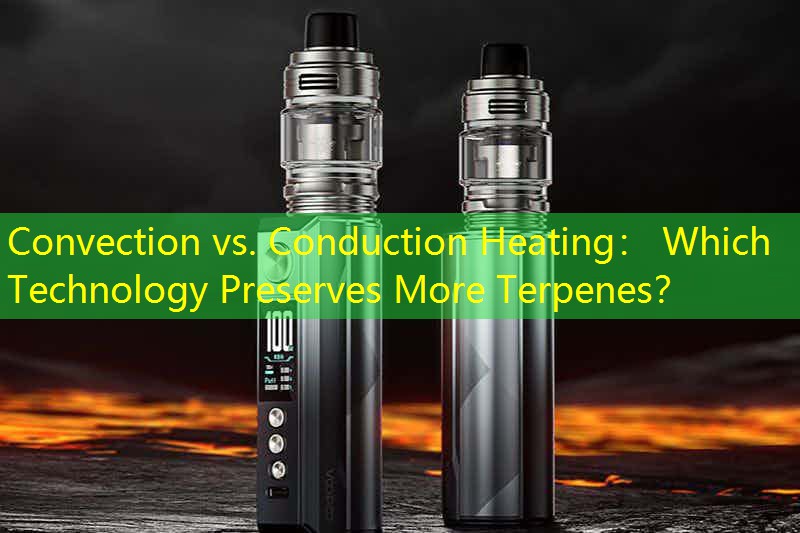Pengenalan
The world of herbal vaporization has evolved dramatically with the advent of various heating technologies. Antara ini, pemanasan konveksi dan konduksi telah mendapat perhatian yang ketara, terutamanya mengenai keupayaan mereka untuk mengekalkan sebatian rasa halus yang dikenali sebagai terpenes. Artikel ini akan memberikan pandangan yang mendalam mengenai perolakan vs. Teknologi pemanasan konduksi, menilai ciri -ciri mereka, pengalaman pengguna, perbandingan kompetitif, kebaikan dan keburukan, dan sasaran demografi.
Heating Technologies Explained
Convection Heating
Convection heating uses hot air to heat the herbal material indirectly, membolehkan kawalan suhu yang sama dan tepat. Kaedah ini memastikan bahawa sebatian aktif, termasuk terpenes, menguap pada suhu optimum tanpa menghancurkan bahan. Pengguna menghargai perolakan untuk wap yang bersih dan beraroma, which can preserve the unique profiles of various strains.
Pemanasan konduksi
Sebaliknya, conduction heating relies on direct contact between the heating element and the herbal material. While this method is often quicker and can provide a robust vapor experience, it risks overheating, potentially degrading terpenes and other volatile compounds. Users generally find conduction devices to be more straightforward and often less expensive, but they may sacrifice flavor integrity for speed.

Ciri -ciri produk
Both convection and conduction vaporizers come with a range of features, including temperature control, mudah alih, and battery life. Convection devices generally feature more advanced technology that facilitates precise temperature adjustments. Sebaliknya, conduction models may offer simplified interfaces, making them more user-friendly for casual users.
User Experience
The user experience varies significantly between the two technologies. Convection heating often requires a learning curve to master the perfect draw and temperature settings. Walau bagaimanapun, users report that the payoff is a richer, more nuanced flavor. Sebaliknya, conduction users appreciate the ease of use but might notice diminished flavor profiles due to uneven heating.
Competitive Comparison
In the competitive landscape, brands such as Volcano and Firefly lead in convection heating, while PAX and G Pen excel in conduction options. Convection devices typically come at a higher price point, reflecting their superior flavor-preserving abilities. Yet, conduction vaporizers often appeal to budget-conscious consumers seeking simplicity and convenience.
Kebaikan dan keburukan
Convection Heating Pros
– Superior terpene preservation
– Even heating
– Greater flavor depth
Convection Heating Cons
– Higher cost
– More complex to use
Conduction Heating Pros
– Quick heat-up time
– User-friendly
– Generally less expensive
Conduction Heating Cons
– Potential for uneven heating
– Risk of flavor degradation
Analisis Pengguna Sasaran
Target demographics for convection vaporizers typically include connoisseurs and discerning users who prioritize flavor and quality. These individuals are often willing to invest more in a premium product. Sebaliknya, conduction devices tend to attract more casual users or those new to herbal vaping, as they offer an accessible entry point without the need for extensive knowledge about temperature control or vaporization techniques.

Kesimpulan
Ringkasnya, the choice between convection and conduction heating largely depends on individual preferences and priorities. Convection provides a superior experience for those seeking to preserve terpenes and enjoy rich flavors, while conduction offers simplicity and speed for casual users. Understanding these differences is crucial for making an informed decision in the dynamic world of herbal vaporization.







